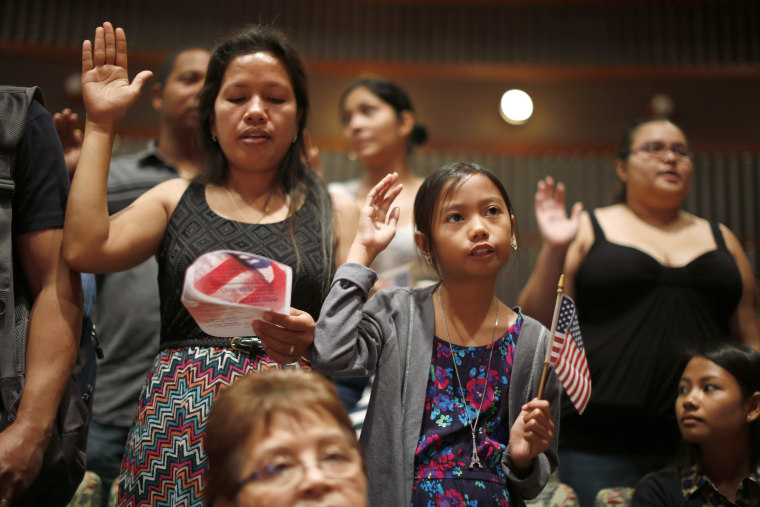WASHINGTON, D.C. -- A researcher at the Urban Institute took a closer look at immigrant youth in the U.S. and found some interesting differences based on whether they are immigrants or their parents or grandparents are. Among other things, economist Maria Enchautegui, the author of “Immigrant Youth Outcomes: Patterns by Generation and Race and Ethnicity” found startling evidence that Latinos whose grandparents immigrated here make a "U-turn" in generational improvement in some areas and end up worse off than the previous generation. Enchautegui talked to NBC News Friday about her study and the U-turn phenomena; here is an edited version of the interview:
NBC: Why did you do this study?
Enchautegui: I did the study because of what I am calling in the report the immigrant youth imperative, the size of the population that is growing is fueling labor force growth … so I think it’s a population we have to start looking at more closely.
NBC: So what did you learn?
Enchautegui: First I learned about the demographic change in this country. (Immigrants, their children, and their grandchildren will account for 82 percent of the projected population growth between 2000 and 2050). It was impactful to me how big it is when you look at this population. If you look at the populations that are non-immigrants, their racial composition and their ethnic composition is very different than the population of first and of second generation, also the geographic distribution is very different. When I look at how these immigrants are contributing to labor force growth …basically in the immigrant youth, there is a lot of growth.
NBC: What do you think we need to be aware of based on some of the findings you made?
Enchautegui: It is well known a lot of second generation are going to college and are much more likely than the first generation to go to college, but when you start dissecting that experience, I find the experience of immigrant youth is quite different (from non-immigrant youth)...They tend to attend two-year institutions and they tend to attend these institutions on a part-time basis...So while yes, we can celebrate that a lot of the second generation is going to college, we can understand that (higher attendance at two-year institutions) can lead to inequalities later on. We also noted, especially now for this election cycle coming up, we see very little participation of immigrant youth in voting and registration.
NBC: One of the interesting things you mention in your study is what you call a U-turn. Why did you use this term and what does it mean?
Enchautegui: We expect that there is progress between the first and second generation. When you come to the third generation, which is the children born here and whose parents were born here, you do not expect more problems, you wouldn’t expect them to go back. We find for Latinos in particular in many outcomes that we measure that Latinos do a U-turn, and that at that point when you compare with non-immigrants instead of inequalities (being) reduced, inequalities increase … that they stagnate. Maybe that would be expected, but that there is a U-turn to increased inequalities is more striking. We found that in participation, in school attendance, in educational attainment, (and) across institutions.
NBC: Are there any ideas as to why that occurs?
Enchautegui: For first generation and second generation, their parents may be reminding the kids about their life back in their home country, so the frame of reference might still be back in the home countries where possibly their lives were much more difficult. But when you go to the third generation, that narrative is possibly not there for a point of reference...You add to that many of the youth have been living a high level of poverty, so policy starts kicking in. There is so much you can do with motivation and drive to get out of poverty. That’s important but if that would be all, there wouldn't be a lot of poor people in this country. At some point, you would need the structural means to overcome a lot of these problems.
NBC: Is there any way we can put this information to use?
Enchautegui: What we would be doing in future work is trying to see what programs are out there and to try to move this youth forward … We know a lot of Latino youth are living in gateway (more accessible and open to immigrants) cities, but also a lot of them are living in cities across the southern border and the pockets of poverty in these cities is very, very high. So it’s not only federal policies, but also policies on the state level and on the city level that will do a lot for this youth … And we have to see how these youth are being engaged by programs and institutions … and access to education is always a policy that helps.
